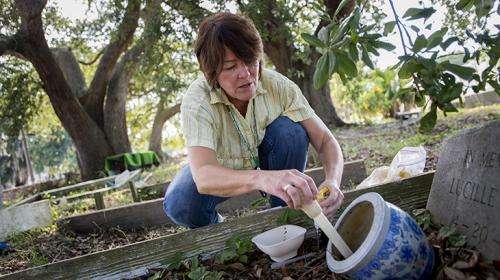Swatting chikungunya

Summer days may be waning, but health officials are still on high alert for new cases of chikungunya, a painful mosquito-borne virus that spread to the United States from the tropics earlier this year.
"Mosquito activity is as bad as it gets right now in the South," says Dawn Wesson, associate professor of tropical diseases and head of the recently created chikungunya task force at the Tulane University School of Public Health and Tropical Medicine. "There is still transmission in the Caribbean, and people are still traveling."
The disease causes a high fever and severe joint pain. It is primarily a concern for those traveling from the Caribbean, Latin America or parts of Southeast Asia, where it is widespread. The Centers for Disease Control and Prevention reported 930 travel-associated cases in the United States as of Sept. 9. So far, Florida is the only state to see local transmission, with eight cases not involving travelers.
Because it has the potential to spread quickly, public health officials are closely monitoring cases. State officials have been testing mosquitoes from New Orleans weekly for the virus. Though Louisiana has seen 10 imported cases of chikungunya, no mosquitos have tested positive.
The virus is a concern because there is no cure, and its symptoms are debilitating, sidelining victims for days.
"Most people don't die from it, but they do get very sick," Wesson says.
It's also much more easily spread than West Nile, which is transmitted to mosquitoes mostly from birds. chikungunya is transmitted directly from person-to-person via mosquito species that are already invasive to the United States—the yellow fever and Asian tiger mosquitoes.
Wesson's advice for travelers is to be vigilant about insect repellant if they're visiting the Caribbean and to watch for symptoms once they return home. She says the rest of us should keep the bug spray handy as a precaution, especially around sunrise and sunset—peak feeding times for mosquitoes.















